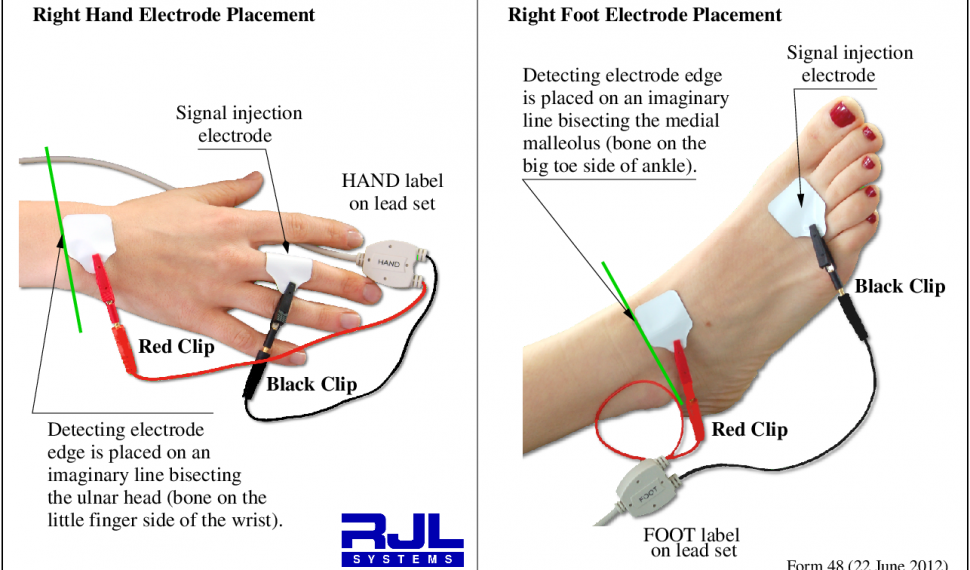About Bioelectrical Impedance Analysis (BIA)
What is BIA?
Our clinic utilizes the RJL BIA system.
Bioelectrical impedance analysis is the study of the electrical properties of biological material and its change over time. This includes humans, animals, fish, plants, vegetables, fruits, and anything living. Even human circulation and breathing can be quantified with a real-time BIA instrument that has enough sensitivity and a short sampling interval[1].
The most popular application for BIA is predicting human body composition as a total body measurement from hand to foot where resistance and reactance are evident from a biological circuit that conducts alternating current. The source electrodes introduce an alternating current (50 Khz) at the base of the toes and fingers. The detecting electrodes measure the voltage drop due to this circuit at the anatomical landmarks of the ankle and wrist bones. This is a four-electrode, or tetrapolar measurement, which is optimal to eliminate electrode and field distribution problems associated with two electrode measurements. The conducting media has a resistive and capacitive electrical path. These two values are independently measured and resolve the cellular and ionic components of the material. The cellular volume is measured as capacitive reactance and the resistive volume as ionic resistance, both of which are expressed in ohms. Modeling these two values as their series or parallel equivalent circuits is important when comparing them to criterion methods.
About BIA:
BIA, or bioelectric impedance analysis, is a fast, accurate, and safe way to measure six key body composition elements. Through the study of the electrical properties of the body and their changes over time, health professionals can easily measure clients’ overall health and quickly chart their progress. BIA analysis is quick, painless, and completely non-invasive, using four electrodes placed on the body: no needles or bloodwork required.
BIA can be performed on any living thing: humans, animals, and even plants. It can be used in clinical, educational, or research settings. Body composition assessment provides healthcare professionals and their clients with a powerful, accurate window into disease and health.

